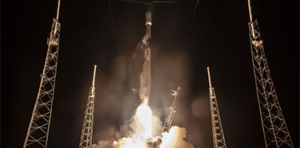
On 23rd May 2019 Space X successfully launched the first 60 satellites related to the Starlink project in the Lower earth Orbit using the Falcon 9 reusable rockets. Elon Musk the CEO of Space X had previously Tweeted the picture of 60 tightly packed satellites stating that the payload weighed around 18.5 tonnes. This first batch is headed for an operational altitude of 340 miles (550 kilometers).
Falcon 9 whose first stage had already flown twice before, was launched from Cape Canaveral Air Force Base in Florida, and after delivering the payload it safely landed on SpaceX’s drone ship “Of Course I Still Love You” off the coast of Florida.
Starlink is one of SpaceX’s most formidable projects. SpaceX envisions putting up two groups of satellites into orbit: one batch of 4,409 satellites that will operate between 340 miles (550 kilometers) and 823 miles (1,325 kilometers) up. And then there’s a second batch of 7,518 satellites that would fly slightly lower, between 208 miles (335 kilometers) and 214 miles (346 kilometers) in altitude. That’s a total of 11,927 satellites all zooming over the Earth, providing internet connectivity to up to a million user terminals on the surface.
Ultimately, the goal is to provide global internet coverage from space, with very short lag times in signal — something that current internet-beaming satellites can’t accomplish. Most satellites that provide internet coverage from space are in much higher orbits known as geostationary orbit — a path about 22,000 miles above the equator. The problem with these satellites, though, is that it takes a long time to get their data, as signals have to travel thousands of miles through space and back.






